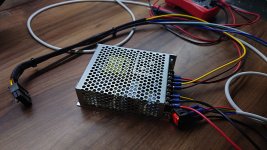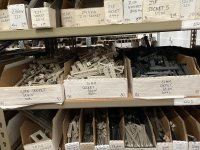Right so today has been interesting...
First thing i checked was the BBU and the ROMs from my board, using a spare board that
@cheesestraws sent me a few weeks back - they checked out - even the mac classic BBU was tested as working - so yes, confirmed,
the Classic BBU is identical to the SE's, in functionality and pinout.
Then i bridged the /AS to A8 bridge and voila - bus traffic appeared! However that was about the size of it - no magic beep, still. Then i looked at the 74F257 spot...err...oops. I'd only tacked in the DIP sockets, and not connected the rest

So, with those soldered on correctly, i checked everything again. AARGH! /AS looked like the resonance cascade at Black Mesa! Oh, wait, forgot to connect the ground clip again...!
The reset line looks like this:
Note the 124Khz cycle time - that's 124 clock cycles. As per the 68000 manual:
"The RESET instruction causes the processor to assert RESET for 124 clock periods toreset the external devices of the system." However, it's stuck in a loop, just staying active for 124ms, then resetting and trying again.
Let's check the CPU clock:
Looks A-OK to me. This is using the cloned GLU chip by Porchy, rather than the original, too.
So let's look at the composite video signal now...
Yep - 22KHz signal, looks to be a checkerboard, from the sync signals.
Hmm. So, let's start checking address lines:
Looks stable enough to me...now how about the data lines?
What in the...?
Okay - some are nearly dead, with no activity, some are like this, with some sort of macabre rollercoaster going on - and yes, i did double check the probe grounds, this time round!
I swapped BBU's, swapped VIA's, swapped the Clone GLU for the original GLU, swapped the SWIM out for the Harris one i received the other day (works fine btw), even swapped the68000 itself, back to the gold version, and no change there, either...i've got some reaaaaally f'ed up signals on the 74FCT245's, and swapping those out made no difference either.
The 74F257's were also swapped out, but pin 12 of U2E seems to produce garbage, even when i can see the incoming signal is A-OK...perhaps a faulty batch of F257's?
Thoughts and comments, idea's etc?








